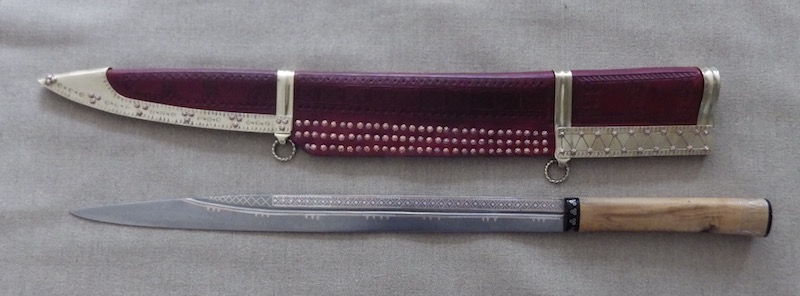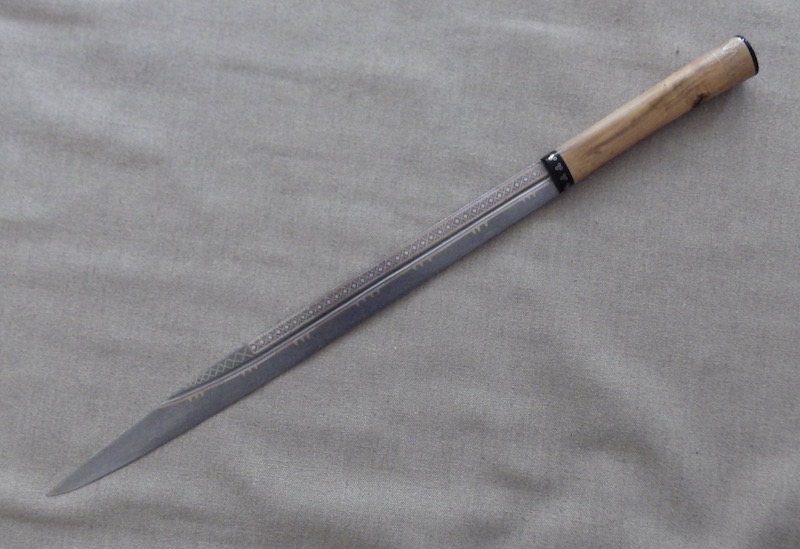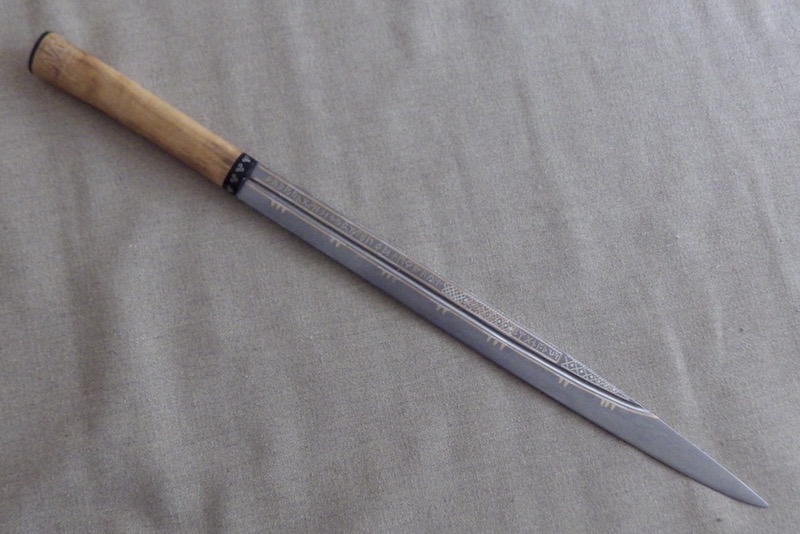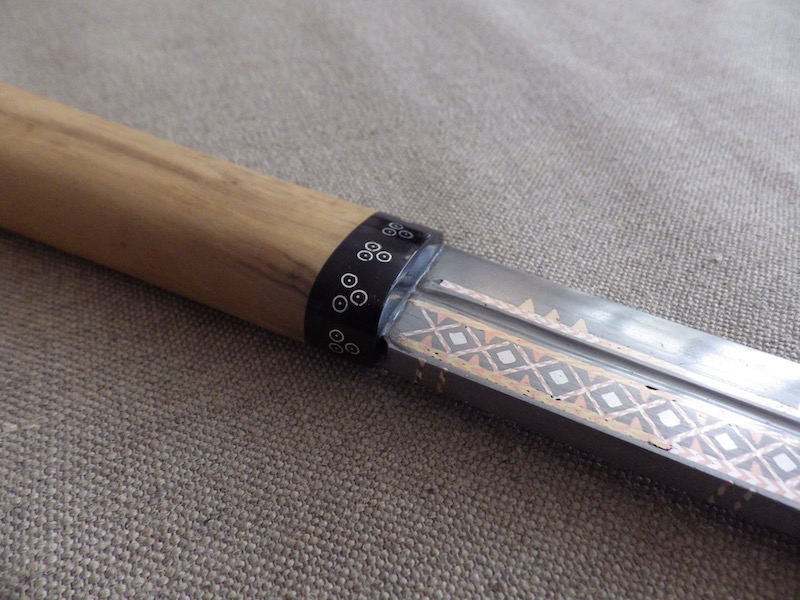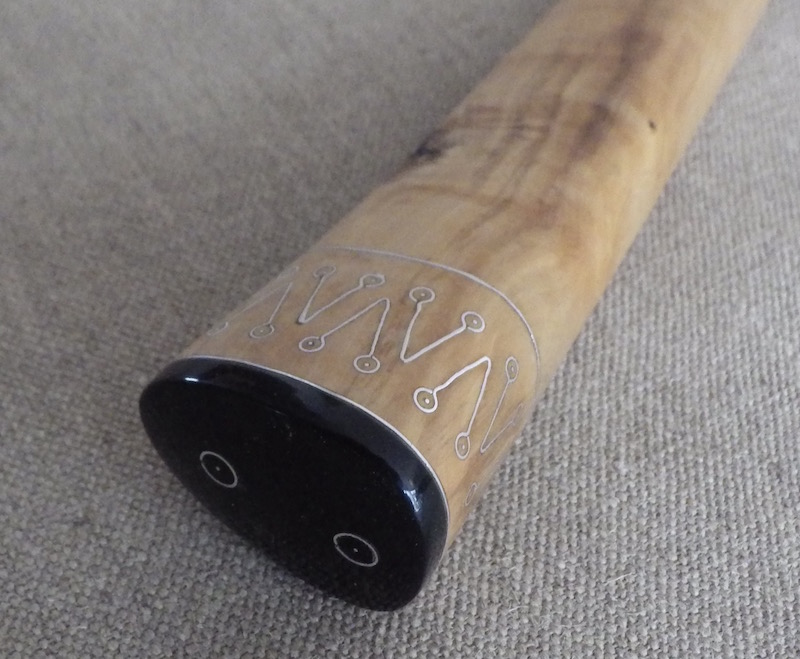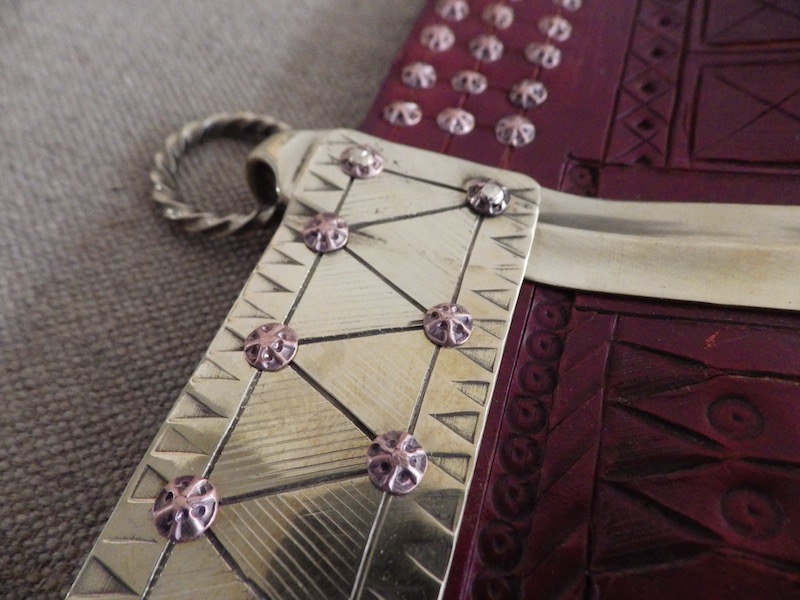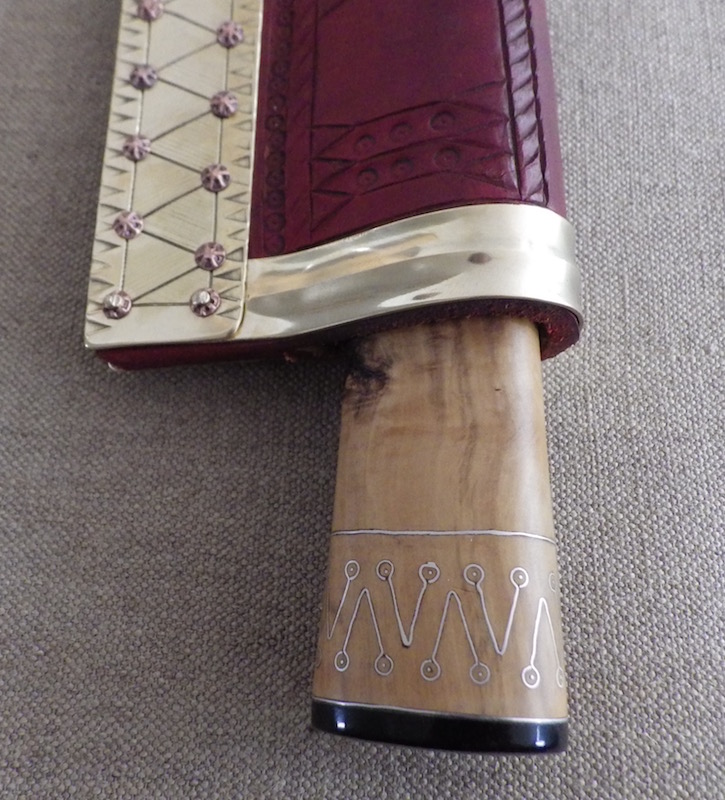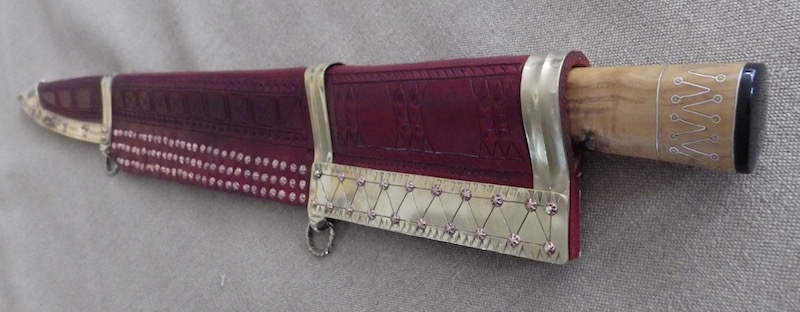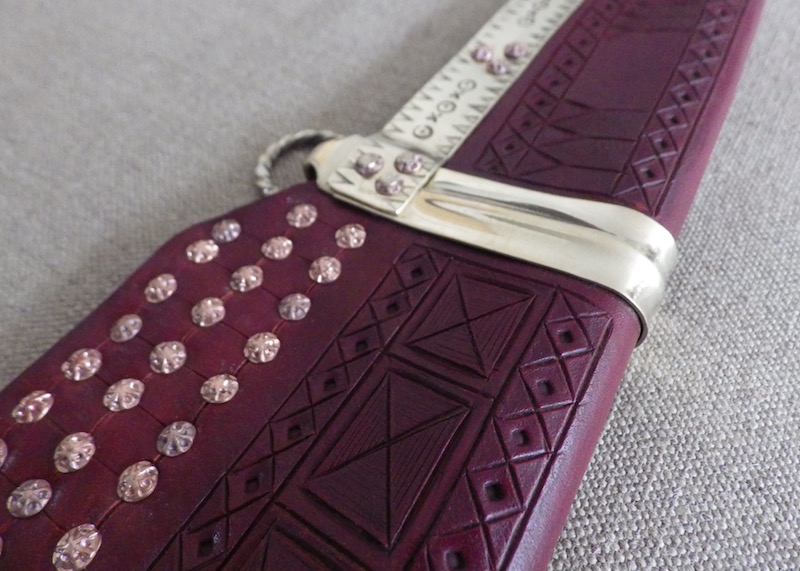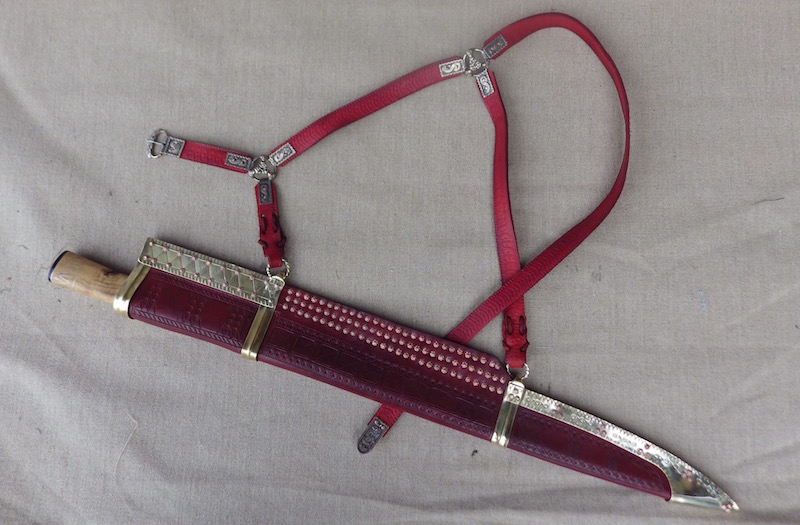Well this is the finished piece that has been going on for the last few months in the 'making of' thread here http://myArmoury.com/talk/viewtopic.php?t=32102
This is a reproduction of the very iconic Seax of Beagnoth from the British Museum. A 10thC langseax with a heavily wire inlaid blade.
I have tried to reproduce this as faithfully as I can using a blade supplied by Owen Bush, forged from his own smelted iron and shear steel and inlaid by myself.
The handle and sheath are speculative and have taken elements from various contemporary finds to create a piece 'that could have been' The handle is horn and box wood and inlaid with silver.
The sheath is leather with brass and copper decorative plates and rivets, the leather decoration is geometric and based on themes from the blade.
Overall length is 82cm/32" and weight is 1136g/2lb8oz
The weight may seem high, but the blade was supplied just a few grams over the museum weight, before the fuller was cut in, so I expect it to be very nearly identical to the original.
I hope you like it and please ask if there is anything you would like to know.
Tod
This is the text from the introduction to the original making thread
| Quote: |
| Possibly the most iconic seax is the Seax of Beagnoth in the British Museum and one I have wanted to reproduce for many years and I now have the opportunity thanks to an MA Alumni.
This is a classic 10thC Langseax with a 55cm/22" blade of the broken back type and is long and beautifully elegant. What really makes it stand out is the very elaborate Futhorc alphabet inlaid in wire on one side and the name Beagnoth on the other. There is considerable further wire inlay in geometric patterns on both sides of the blade as well as the spine. The origin of the blade is most probably Kent as the only two renderings of the name in manuscripts are from Kent and the alphabet used, also best fits that from Southern England. Thanks to Ryan Renfro who arranged a visit to the BM in December last year, both myself and Owen Bush were able to measure, handle and photograph the seax first hand and see the 'other' face that is almost never on display. We were also able to get a very close examination of the wire inlay. The inlay is executed in silver, brass and copper in what appears to be a fairly random manner, so that even parts of the same letter could have two different combinations of twisted wire. Although this appears random, it was deliberately done and was not, in our opinion, after use repairs. We have opted to try to replicate the inlay as faithfully as possible and this will include the apparently random materials choice. We were also able to measure the section of the blade, which is an apple seed grind from edge to the fuller and again back toward the spine, so that the thickest section of the blade is right by the fuller, not at the edge as you may expect. What is also interesting is that there is a partial break near the 'broken' part of the back that has caused the tip of the blade to rotate around. This means that the very distinctive and elegant form of the blade is in fact not what it would have looked like in life. We have opted to shape the blade more in line with how it would have originally been. Completely unrelated to this visit my client contacted me to see if I was interested in making as faithful a reproduction as possible, a chance at which I jumped, and of course for me there would only be one person to contact for the blade, my old friend Owen. I discussed the project with Owen and my client and we settled on making the blade from bloomery steel that Owen smelted himself from a variety of ores. The blade construction and make up is Bloomery iron and bloomery steel, from 3 separate smelts. The steel is multiply folded magnetite bloom, circa 25,000 layers, and is a high carbon steel. Edge and body is a sandwich of high carbon bloomery steel (25,000 layer) with a mix of bloomery iron from a hematite smelt and bloomery iron from a siderite/magnetite smelt on the outside of the sandwich. The back edge is laid on its side and is again a mix of the iron and steel layers. Materials are derived from Wealden siderite from Kent, Swedish magnetite and hematite which is in fact American. The blade was then Oil hardened in high temperature oil, making for a tough and moderately hard blade, but not as remotely hard as modern steels. We don't know the method of construction of the original piece, but Owen has followed an established method for knives of this period. This construction method gives a distinctive look that shows through especially post etch, but this will be removed during the inlay process and can be returned by an etch after if required or the blade can be left plain; though general use will cause the pattern to show once more as the blade ages. |
